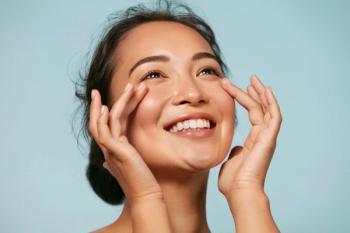
Cosmetics: One Ingredient, Two Ways: Topical and Ingestible
PycnogenolPycnogenol is the branded name for an extract sourced from the bark of the French maritime pine tree. It is supplied exclusively by Natural Health Science (Hoboken, NJ) in North America, and by Horphag Research (Geneva), the exclusive worldwide supplier of the ingredient. Pine bark extract is regarded as a powerful antioxidant, containing highly concentrated amounts of bioflavonoids and active compounds.
Pycnogenol
Pycnogenol is the branded name for an extract sourced from the bark of the French maritime pine tree. It is supplied exclusively by Natural Health Science (Hoboken, NJ) in North America, and by Horphag Research (Geneva), the exclusive worldwide supplier of the ingredient. Pine bark extract is regarded as a powerful antioxidant, containing highly concentrated amounts of bioflavonoids and active compounds.
Pycnogenol has been subject to extensive clinical and pharmacologic studies over the past 40 years, according to Horphag Research. It has been used in a variety of nutritional products and is widely used in beauty drinks in the United States, Europe, and Asia. Now, Pycnogenol is being seen more often in topical beauty products such as Derma-e (a natural personal care brand) and Perricone MD’s Pigment Correct line, which contains both a supplement and a cream.
When taken orally, Pycnogenol affects the body’s vascular system, improving the skin’s natural detox process by enabling the faster exchange of toxins with oxygen and nutrients. Pycnogenol also binds to collagen and elastin proteins in the body, inhibiting their degradation by fighting free radicals. (Free radicals can destroy healthy skin cells and increase the rate of cell aging.)
“Unlike most other organs, the skin’s dermis layer is constantly regenerating as old cells in the epidermis are shed and replaced by new ones,” explains Frank Schonlau, PhD, Horphag’s director of scientific communications.
“This continuous cell division requires nutritional components for generating new skin cells. A lack of these nutrients will immediately result in a noticeable roughness on the skin’s surface. Active ingredients such as those in Pycnogenol that improve the performance of the vascular system and blood microcirculation bring visible benefits to the dermis,” he says.
When used in a topical formulation, Pycnogenol provides substantial anti-inflammatory and photoaging effects. It also supports renewal of collagen fibers, promoting firmness and elasticity, according to Schonlau.
“The topical supply cannot compensate, however, for a suboptimal ‘supply chain’ of nutrients from within,” says Schonlau. “Only a healthy level of microcirculation will improve the look of your skin, so it is important for a topical product to be used with an ingestible.”
Testing has shown Pycnogenol’s measurable effect on the body. Within half an hour after consumption of a single dose, improved vasodilation was evident in test subjects, says the firm. Microvessels at the root of the fingernails were dilated, and sensors registered increased levels of oxygen in the blood.
BioCell Collagen II
In 2007, BioCell Technology created a cosmetic-grade, water-soluble version of its BioCell Collagen II ingredient. BioCell Collagen II CG-WS is a water-based solution that can be incorporated in creams, lotions, and serums.
As a dietary ingredient, BioCell Collagen II has been sold by BioCell Technology since 1997 as a powder that can be incorporated in capsules, tablets, and soft-gel formulations. A taste-free version can also be used in liquid products. The proprietary ingredient is featured in the functional beverage supplement Jusuru Life Blend, which launched in 2009 and claims to promote healthy aging, active joints, and younger-looking skin.
The ingestible and topical BioCell Collagen II formulations are supposed to work synergistically when taken as a two-part regimen. Benefits include delaying or minimizing the effects of both natural and UV-mediated skin aging by preventing dehydration, dermal shrinkage, and the formation of fine lines and wrinkles.
BioCell Collagen II CG-WS contains hydrolyzed collagen peptides, depolymerized chondroitin sulfate, and hyaluronic acid in a naturally occurring matrix, created by a patented process.
“This natural matrix of functionally essential components replenishes age-related loss of the skin dermal matrix, helping regain volume, turgidity, and suppleness,” says Joosang Park, PhD, BioCell’s vice president of scientific affairs. “Many independent studies have shown that hydrolyzed collagen peptides help maintain the integrity of the skin’s dermal collagen network, which is critical in maintaining the tensile strength of the skin.”
The supplier’s own studies have shown that BioCell Collagen II inhibits hyaluronidase-the enzyme that breaks down hyaluronic acid from the skin as well as from the joints. Hyaluronic acid is important because it helps the skin maintain moisture levels; however, it breaks down as we age, causing the skin to lose firmness and elasticity, which leads to wrinkles.
According to the supplier, studies have shown that when ingested, the body effectively absorbs the hyaluronic acid in BioCell Collagen II. “The concentration of hyaluronic acid in the body increases its concentration in the blood by about sixtyfold,” says Park.
Sanguisorba officinalis
Sanguisorba officinalisextract is a popular ingredient widely used in beauty products in Japan. In the United States, brands such as Dermafina and SkinCeuticals have used it in skin care products.
The source of the extract is the Sanguisorba officinalisplant, which is widely used throughout Asia. Its dried roots have been used to treat burns, internal hemorrhages, and inflammation. Studies done in Korea have shown that it also helps many types of allergic skin diseases, including urticaria, eczema, and allergic dermatitis.
Draco Natural Products (San Jose, CA) introduced Sanguisorba officinalisextract this year for use in topical formulations, to provide moisturizing and antiwrinkle benefits. “It’s very likely that this extract would have ingestible beauty benefits as well, since it is rich in antioxidant and anti-inflammatory compounds that could reduce irritation and inflammation that causes wrinkles and damage, says Brien Quirk, Draco’s director of research and development.
There are no clinical studies that prove sanguisorba’s benefits to the skin when ingested, but herbal practitioners agree that its astringent qualities may tonify internal tissues, says Draco.
Studies do verify the extract’s effectiveness when used topically, says the company. When ziyuglycoside I is isolated from Sanguisorba officinalisroot extract, testing showed it could be used as an active ingredient in cosmetic products. Sanguisorba reduces the enzyme elastase, which breaks down elastin and collagen elasticity to help reduce or prevent wrinkle formation.
“After testing, there was a noticeable benefit with the use of the botanical versus the control in the Korean study,” says Quirk. The extract’s antiwrinkle effect on the skin was visually evaluated during studies on volunteers that had been using it for 12 weeks. Testing showed very high levels of free radical scavenging and elastase inhibition activity, showing that the extract had a significant inhibitory effect against aging.
Lipowheat
Lipowheat is a new ingredient supplied exclusively by P.L. Thomas in North America. It can be used in oral and topical applications. It is a natural wheat ceramide, derived from a vegetable protein. (All traces of gluten have been removed, so it is non-allergenic.) One nutricosmetic product that contains Lipowheat is already on the market. Others, including a supplement and a sunscreen, will be launching soon.
Lipowheat is the only source of natural ceramides on the market with New Dietary Ingredient (NDI) status. “This is a huge deal because most ingredients are rejected for this status due to a lack of studies demonstrating safety and effectiveness,” says Alda Brandao, product manager, nutricosmetics, P.L. Thomas.
Ceramides are a family of lipid molecules that support the integrity of the skin’s surface and its barrier properties by maintaining hydration and elasticity. Ceramides also offer protection against age-related deterioration and environmental factors, while protecting the skin’s fibroblasts, which manufacture collagen and elastin in the body.
The corneal layer of the skin is composed of keratinized, fused, flat cells bound together by lipids. “When the skin’s lipid concentration decreases, we can experience dryness or roughness that can be linked to winter weather or the aging process,” says Brandao.
Since 2007, three different studies have shown that Lipowheat supports healthy skin hydration when taken orally. Clinical test results have indicated that after taking 200 mg/day of Lipowheat powder orally, skin hydration significantly increased and dryness noticeably improved.
Other tests demonstrate Lipowheat’s ability to hydrate topically. “In vitroresearch has also indicated that Lipowheat is a versatile topical cosmetic that protects and hydrates the skin,” Brandao.
Cococin
Cococin, supplied by Sabinsa Corp. (East Windsor, NJ), is the freeze-dried liquid endosperm of green, or immature, coconuts. The supplier uses a patented lyophilization process to produce a stable composition, while retaining the actives that are present in coconut water. These actives include sensitive nutrients and growth factors. The solid form produced by this process protects the protein components and actives during the pulverization process. Once a powder is formed, its crystalline state keeps these components stable.
“Cococin has demonstrated benefits for both internal and topical use,” says Shaheen Majeed, marketing director, Sabinsa.
Cococin contains all the nutrients and growth factors needed to support the growth of the coconut plant embryo. “Therefore, it also supplies nutrients to our cells-in our skin and on our scalp-to support healthy skin and hair,” says Lakshmi Prakash, PhD, vice president of innovation and business development, Sabinsa. “It is often used as a nutrient medium to grow cells in the laboratory,” she adds.
The concentration of sugars, vitamins, minerals, and amino acids that Cococin contains supports hydration of the skin and scalp, according to the supplier. “A placebo-controlled clinical study with a topical cream containing Cococin showed significant benefits in maintaining skin elasticity and texture,” says Prakash.
Cococin was first launched in 2002, but perhaps a larger demand for coconut-related products is just beginning. Sabinsa has been seeing increased interest in Cococin, especially for functional foods and nutraceutical applications. Coconut water beverages are also becoming increasingly popular now. “We’ve been speaking to some companies looking to formulate ‘anything coconut,’” says Prakash.
Pomegranate
Pomegranate, one of the first antioxidant superfruits to become well recognized by consumers, is still being used in beverages, supplements, and skin care products.
Murad’s facial skin care brand Vitalic Regimen includes pomegranate cleanser and pomegranate moisturizer. Murad also markets Pomphenol Sunguard Dietary Supplement, which contains 100% pomegranate extract in capsule form. The product claims to increase sun protection and fight signs of premature aging by providing protection against free radicals. The supplement is marketed as part of Murad’s Sunguard brand, which features pomegranate in all of its other topical sun-protection products.
Draco Natural Products has been selling its pomegranate extract since 2004. According to the supplier, studies have shown that topical application of pomegranate extract can stimulate new skin cell synthesis, while pomegranate’s effects on skin whitening have been shown from both topical and ingestible applications.
Yumberry and Honeyberry
Juice made from the Asian superfruit yumberry has become more frequently spotted at retailers such as Whole Foods Market for a couple of years now. Yumberry has been called a powerful antioxidant that helps neutralize the effects of free radicals to promote balanced, smooth skin-and it is also being used in cosmetic products.
Last March, Stila Cosmetics launched a lip and cheek stain, Yumberry Crush. Victoria’s Secret Beauty features the superfruit in its personal care products, including a body wash, scrub, and lotion. Murad uses the popular ingredient in its skin care line, Clean Scene, which launched in July. The line is marketed to teens, and all of its products contain yumberry extract, claiming to provide a smoother complexion.
Draco Natural Products supplies yumberry extract, along with a new superfruit that launched this year, Honeyberry. Also called Blue Honeysuckle Berry, this superfruit-native to the arctic tundra, Russia, Japan, and China-contains organic acids and five times more antioxidant compounds than blueberries.
Research has shown the fruit’s ability to protect skin cells from UVA free radical damage, which leads to skin aging. Studies in which human cells were exposed to UVA radiation showed that compounds in honeyberry protected keratinocytes (the cells in the outermost layer of the skin) against the oxidative degradation of lipids and the formation of free radicals. “The extract of honeyberry at low concentrations could be effective in protecting against advanced aging and skin cancer development,” says Draco’s Quirk.
Honeyberry is available for use now in topical applications, but ingestible beauty benefits are also likely in the future, once proper testing is done.
Aloe Vera
When you were a child, your mother may have applied Aloe vera to soothe your skin. This age-old favorite remedy is now supported by clinical studies that demonstrate aloe’s specific benefits to the skin.
In 2009, a clinical study published in the Annals of Dermatology; Seoul, Korea, vol. 21, no. 1, tested the antiaging skin effects of oral intake of Aloecorp Inc.’s (Lacey, WA) Aloe vera gel. The trial studied 30 healthy female subjects over the age of 45. Subjects were separated into two groups. For 90 days, one group supplemented with a low dose of aloe (1200 mg/day), while the other group received a high dose (3600 mg/day).
Skin health was measured at the start of the study and then again at the conclusion of the study. Facial wrinkles were measured using a skin replica. Skin elasticity was measured by what the researchers call an in vivo suction skin-elasticity meter. Skin samples were also taken. The researchers found that facial wrinkles improved significantly in both groups after treatment, and that facial elasticity improved in the lower-dose group.
“The paper showed that our aloe can tighten the skin in as little as one hour,” says Ken Jones, vice president and chief science officer for Aloecorp.
Clinical studies like these are helping provide the evidence of aloe’s efficacy-and convincing more skin care companies to get on board. Aloecorp says last July, a client used its Aloe verain a topical/oral combined regimen.
“The benefit of using the topical and oral form together is that you get the immediate effect with the topical, and over the long term, you get wrinkle reduction and increased skin elasticity with the supplement,” says Jones. “You get the full benefit while doing both.”
It’s important to source aloe from a reputable supplier, says Aloecorp. “We’re the only company that promotes our product based on efficacy studies performed on our ingredient,” says Jones. “Many aloe ingredient suppliers use third-party literature and try to connect research that was done at an academic institution on aloe materials that were developed in the laboratory, grown out in their gardens, and then processed in the facility. But Aloe vera ingredient suppliers all manufacture their ingredient by different processes.” Aloecorp’s Qmatrix patented processing method of polysaccharide preservation helps retain the aloe’s freshness and biological activity.
Newsletter
From ingredient science to consumer trends, get the intel you need to stay competitive in the nutrition space—subscribe now to Nutritional Outlook.





